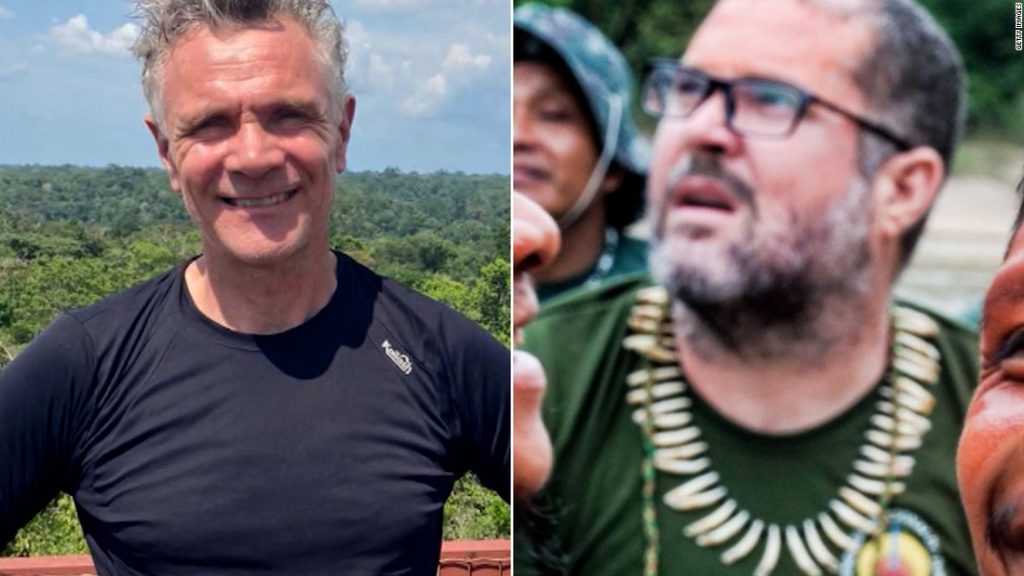What drew Dom Phillips and Bruno Pereira into the Amazon

Police followed the suspect’s directions to human remains in the jungle, but forensic analysis to identify them has not yet been completed. “Although we are still awaiting definitive confirmations, this tragic outcome puts an end to the anguish of not knowing Dom and Bruno’s whereabouts. Now we can bring them home and say goodbye with love,” said Phillips’ wife Alessandra Sampaio in a statement.The pair, who were first reported missing on June 5, had received death threats prior to their departure, according to the Coordination of the Indigenous Organization, known as UNIVAJA. Each was well versed in the area’s often-violent incursions by illegal miners, hunters, loggers and drug-traffickers — but they were equally dedicated to exposing how such activity plagues Brazil’s protected wild areas, endangers its indigenous peoples, and Pereira’s passion was evident in an interview with CNN last year. “I can’t stay away for too long from the parentes,” he said, referring to the region’s indigenous people with the affectionate term “relatives.”Phillips, 57, a widely respected British journalist who had lived in Sao Paulo and Rio de Janeiro, brought environmental issues and the Amazon to the pages of the Financial Times, The Washington Post, The New York Times and, principally, The Guardian. Pereira was on leave from FUNAI amid a broader shake-up of the agency when he joined Phillips to assist in research for a new book.The planned book would be titled “How to save the Amazon.”In a video filmed in May in an Ashaninka village in northwestern Acre state, and released by the Ashaninka association, Phillips can be heard explaining his endeavor: “I came here (…) to learn with you, about your culture, how you see the forest, how you live here and how you deal with threats from invaders and gold diggers and everything else.” Pereira last year lamented the diminished state of Brazil’s environmental and indigenous protection agencies under Bolsonaro’s presidency. But he also saw a bright side, telling CNN that he thought the shift would push the Javari Valley’s indigenous peoples to overcome historical divisions and form alliances to protect their shared interests.However, in another interview with CNN, later in the year, he was more circumspect about the dangers. Having just returned from a trip in the rainforest, his feet and legs covered with mosquito bites, Pereira described a backlash from criminal groups to indigenous territorial patrols.”[The patrols] took them by surprise, I think. They thought that since the government withdraw from operations, they would get a free pass on the region,” Pereira said.But neither Pereira nor Phillips were going to give a “free pass” to exploitation of the Amazon.”Dom knew the risks of going to the Javari Valley, but he thought that the story was important enough to take those risks,” Jonathan Watts, global environmental editor for the Guardian told CNN.”We knew it was a dangerous place, but Dom believes it is possible to safeguard the nature and the livelihood of the indigenous people,” said his sister, Sian Phillips, in a video last week urging the Bolsonaro government to intensify its search for the pair.On Wednesday, Jaime Matsés, another local indigenous leader in the Javari Valley, told CNN he had recently met with Pereira to discuss a new potential project monitoring illegal activity in his community’s territory.”He seemed happy,” Matsés recalled. “He wasn’t afraid to do the right thing. We saw him as a warrior like us.”And if their disappearance was intended to instil fear among those who would follow in their footsteps, it has backfired, Kora Kamanari, another local leader, told CNN on Wednesday.”We are more united than before and will keep on fighting until the last indigenous is killed.”Julia Koch contributed reporting.




